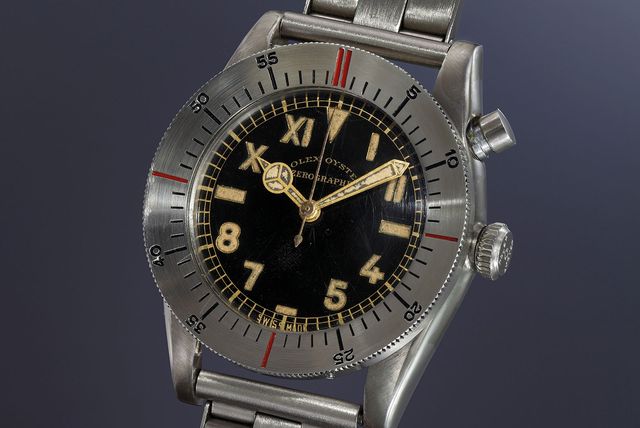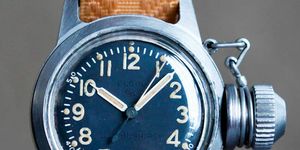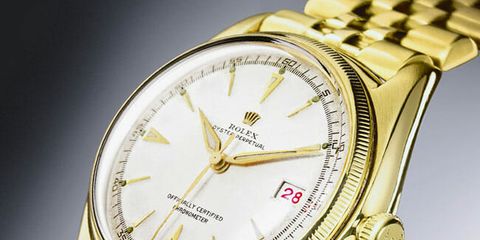Welcome to Watches You Should Know, a biweekly column highlighting important or little-known watches with interesting backstories and unexpected influence. This week: the Rolex Zerographe.
When the modern dive watch emerged in the early 1950s, it was a winning combination of elements that had evolved over decades: water resistance via a unique case design, strong legibility with luminescent dials, automatic winding and, of course, the distinctive timing bezel that defines the look. Though the clever bezel design found its perfect niche on the dive watch, a mysterious Rolex watch from over a decade earlier was a pivotal evolutionary link.
In 1937, Rolex created the reference 3346 Zerographe. It came in different variations, but the most famous model has a captivating look: With a "California dial" (half-Roman, half-Arabic numerals) and prominent steel bezel with a 60-minute scale, it looks thoroughly modern in its design (though it's only 32mm wide). You could easily mistake it for a dive watch (and in fact it did use Rolex's "waterproof" Oyster case) — but a pusher at 2 o'clock hints that there's more going on.
The Zerographe looks little like any chronograph as we know them today, but it features a strange take on the stopwatch function and was Rolex's first stab at an in-house chronograph movement. When taken together with its rotating bezel (a first for a Rolex model), this stopwatch movement means that the Zerographe is the progenitor of the two most significant Rolex watches ever: the Submariner (dive watch) and Daytona (chronograph).
Most chronographs have many subdials and hands with a couple of pushers to stop, start and reset the stopwatch function. But the Zerographe dial looks like that of a typical time-only watch — and it functions in the same way too, displaying hours and minutes with the seconds hand sweeping continuously around the dial. So where's the chronograph? How do you use it to time something? The answer turns out to be simultaneously clever and crude:
Depress the pusher at 2 o'clock and the seconds hand will snap back to zero and stay there as long as you hold it down. It'll restart again when you let go, and in this way you can time something up to 60 seconds. If you first align the bezel's red lines with the minute hand, you'll also be able to measure minutes. (Unfortunately, you can't simply stop the seconds hand as users of typical chronographs would expect.) This feature is quirky as hell and definitely less convenient than the more standard chronograph, but it sure is interesting.
Though its functionality is basic, the watch was an experiment for Rolex. Essentially a prototype, it's not even certain how many examples were produced, but some estimates indicate there were possibly less than a dozen. Further, the known examples feature different designs, not all of which includea rotating bezel. Zerographes are as rare as just about any prototype watch, but the same movement and concept saw a bit more production under the name Centregraph.
The Zerographe wasn't the first watch in history to feature a rotating bezel (John Harwood used a rotating bezel to both set the time and wind a movement back in 1924, and Weems' 1929 patent for Longines established its more familiar use), but it was an important one for the industry and Rolex in particular — the brand that would later define the genre with its iconic Submariner.
The Zerographe provides a look into the evolution of sport and tool watches, and shows how the elements that define them were in fact in development well before such products would be available (or palatable) to the public. Watches with rotating bezels like the Glycine Airman, Rolex Submariner, Zodiac Sea Wolf and Blancpain Fifty Fathoms would define the segment around 1953, but the Zerographe is the germ of the great watches we love today.




















